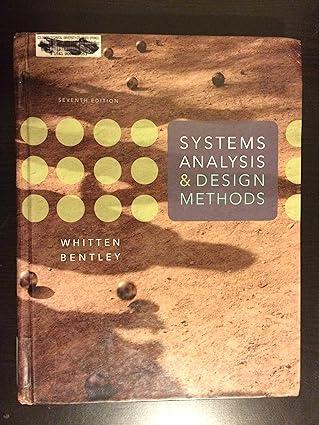In mini case 3 of the previous chapter, you created a prototype for a government system. Exchange
Question:
In mini case 3 of the previous chapter, you created a prototype for a government system. Exchange prototypes with another group (just as you did in mini case 4 of that chapter). This time, test each other's prototype. Document your findings thoroughly and prepare a report. Give one copy of the report to the other group (the one who created the prototype) and one to the professor:
Mini Case 3:-
Using your work from mini case 2 and from previous chapters, create is system prototype for your government client. What language are you using? Why? Submit your prototype on CD to your professor, as well as a hard copy of your source code, screen shots, a short discussion of any assumptions you made, and a short discussion of the business problem you are solving with the system.
Mini Case 2:-
In previous chapters, you interviewed a government department and began designing a new system for it. Return to the notes:
a. Describe the system that you recommend it have.
b. Using UML modeling, diagram the system you are proposing. (Consider Use Case, Class, Sequence, and State Machine diagrams)
c. Submit a deliverable to your professor, including a discussion of the previous interviews and parts \(2 a\) and \(2 b\) of this mini case. You will be graded on correctness, completeness, and professionalism.
Mini Case 4:-
Prepare a manual for your revised prototype. Remember to orient the manual to the expected user, and not your professor Bind the manual and submit it to your professor. You will be graded on clarity, usability, completeness, and professionalism.
Step by Step Answer:

Systems Analysis And Design Methods
ISBN: 9780073052335
7th Edition
Authors: Jeffrey Whitten, Lonnie Bentley





